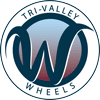Wheels is for everyone
Wheels is a convenient, accessible and safe way for people with disabilities to get around.
All Wheels buses meet Americans with Disabilities Act (ADA) requirements, offering wheelchair ramps and other features to accommodate riders with disabilities. Digital signs and audio systems announce major stops and transfer points.
Get a free copy of the Access Alameda Guide. Download on accessalameda.org
Need more help?
Wheels Customer Service Center
Call 925.455.7500
Accessibility on Wheels bus service
Curb level boarding on low-floor buses
Wheels operates low-floor buses as part of its fleet of accessible vehicles. Low floor buses enable ambulatory passengers to board at curb level without the need to step up to enter the bus.
Priority seating for seniors and those with disabilities
Certain seats on the bus are designated as priority seating for passengers with disabilities and seniors. These priority seats are located just behind the driver. The bus driver may ask an ambulatory passenger occupying priority seating to move if a passenger with disabilities or a senior boards.
Voice announcements for visually impaired passengers
All transfer point bus stops and major bus stops are called out by the Wheels’ Automatic Voice Announcement System. Additionally, as the bus approaches a transfer point bus stop, the system announces the bus line number which can be heard externally by waiting passengers.
We welcome service animals
Service animals utilized for mobility assistance are welcome on Wheels buses. The following regulations must be followed:
- Service animal owners are required to pay a full fare except when presenting a Regional Transit Connection Discount Card, Medicare Card, or DMV placard identification card.
- All service animals must be on a harness and sit on the floor out of the aisle.
- Owners must have full control of their service animal and are liable according to the law.
- Service animals may not pose a threat or danger to other riders.
Traveling with an escort or personal care attendant
Some people travel with an attendant when using transit or paratransit. For example, a paratransit rider may require assistance within their home when preparing for a trip, or an escort from the paratransit vehicle to their ultimate destination. In other cases, riders cannot be safely left alone and/or require supervision even while in the vehicle for their own safety and the safety of other passengers and the driver. In such cases, an escort or personal care attendant (PCA) accompanying the rider may be necessary for ensuring safe travel.
One PCA may travel for free with a paying passenger on Wheels Dial-A-Ride.
More information about PCA/escort policies on fixed route service
Call 925-455-7555 for the Wheels Paratransit Planner.
Transportation escort assistance
Call 211 for Alameda County’s hot-line for social service referrals.
Visit Alamedaco.info for 2-1-1 Alameda County online resources.
Wheelchair access on Wheels buses
Riders in wheelchairs are welcome onboard the bus. All Wheels buses are equipped with bi-fold ramps and a kneeling feature to make boarding and disembarking the bus quick and easy for all passengers, especially those requiring the use of a mobility device. Customers should tell the driver if they need to use the ramp or kneeling feature to get on or off the bus.
Rules for wheelchair users
Wheelchair brakes must be in good working order at the time you board a bus. This requirement is for your safety during the ride. If you are able to transfer yourself to a regular bus seat, you may do so. The Wheels driver will secure your wheelchair in the designated wheelchair station. It is your option whether to remain in your wheelchair.
Wheelchair size accommodations
ADA standards require that we accommodate wheelchairs measuring up to 30 inches wide by 48 inches long, at a level of two inches above the ground, and weighing no more than 600 pounds when occupied. Wheels buses may not be able to accommodate wheelchairs exceeding these standards.
How to board in a wheelchair
- When the bus stops at the curb, position your wheelchair approximately six feet from the wheelchair-accessible doorway.
You are required to have functioning brakes on your wheelchair and encouraged to wear a lap/seat belt. Wheelchair footrests should be set at a minimum of four inches to ensure clearance once inside a vehicle and to avoid ground contact upon departure.
- Before the Wheels driver operates the wheelchair lift, ambulatory passengers will get on and off the bus.
- After the Wheels driver lowers the ramp all the way to the ground, position your chair directly onto the ramp and move slowly to the wheelchair station located behind the driver.
- The driver will raise the regular passenger seats to expose the wheelchair station and assist you in positioning your chair in the wheelchair station space.
- The driver will secure the wheelchair to the floor with the tie-downs.
Buses are also equipped with tether straps for wheelchair passengers. Tether straps increase the accessibility of Wheels buses to individuals using all types of mobility aids and assist drivers in performing safe and proper securing of wheelchairs.
How to get off the bus in a wheelchair
- Do not attempt to remove the tie-downs on your own; the driver will remove them after stopping the bus.
- When leaving the bus, the driver will position the ramp for your departure. The chair brakes must be applied before the ramp descends.
- Once the ramp has been lowered completely and the safety flap lowers, release the brakes and proceed onto the sidewalk.
Safety straps for mobility devices
Because safety is our priority, Wheels has developed a marking and tethering program to assist people using Wheels buses to ride safely by ensuring that mobility devices (manual wheelchairs, power wheelchairs), designed and sold for people with disabilities, are properly secured in the bus.
Reasonable modifications
LAVTA considers all requests for reasonable modifications of its policies, practices, or procedures, including those set forth herein, when necessary to avoid discrimination and ensure accessibility to those with disabilities. LAVTA is not required to grant requests for reasonable modifications that would fundamentally alter the nature of our services, programs or activities; are not needed for access to LAVTA services, programs or activities; or present a direct threat of injury to other persons or property.
All drivers are trained to assist when possible but should any person seek a reasonable modification of LAVTA fixed route or paratransit policies, practices or procedures, desire to appeal a reasonable modification determination, or believe they have been discriminated against by LAVTA on the basis of a disability, he or she may submit a modification request, appeal, or complaint for handling in accordance with related LAVTA policies. Requests may be submitted by phone, mail or email to LAVTA (see Contact Us page) or by selecting the ADA category in the customer service portal. The request should be made as specific as possible and include information as to why the requested accommodation/modification is needed in order to allow the individual to use LAVTA’s services. In the case where a request cannot be practically made and determined in advance, a supervisor shall make the determination of whether the modification should be provided at the time of the request.
LAVTA staff will begin an investigation within fifteen (15) working days of the receipt of a written request. Staff will contact the customer in writing no later than thirty (30) working days after the receipt of request for additional information, if needed. If the customer fails to provide the requested information in a timely manner, LAVTA shall close the request.
LAVTA will complete the investigation within ninety (90) days of receipt of the request. If additional time for investigation is needed, the customer will be contacted. A written response will be prepared and will include a summary of the findings and recommended action. The customer will have fifteen (15) working days from receipt of the response to appeal. If no appeal is received, the request will be closed.



